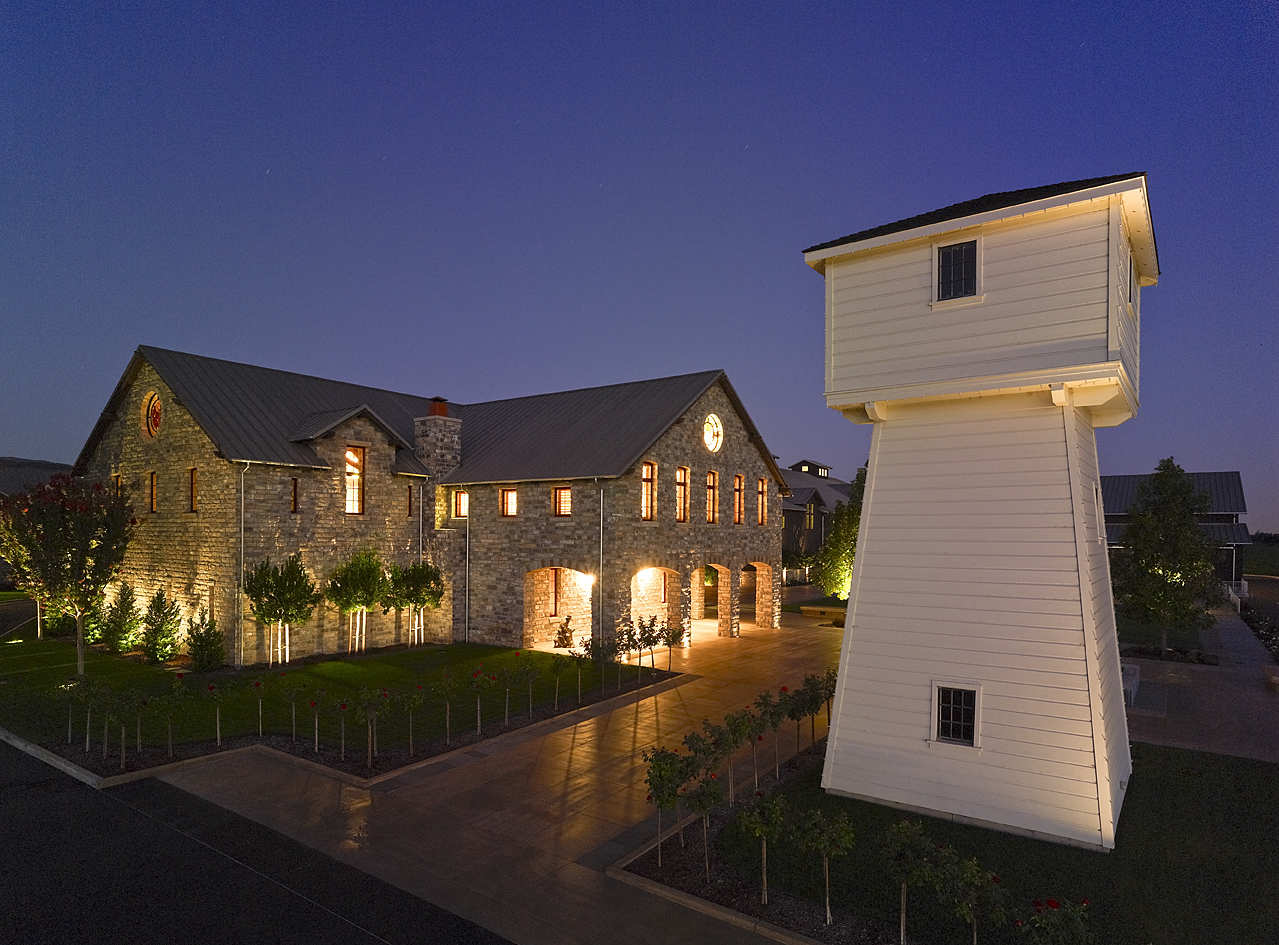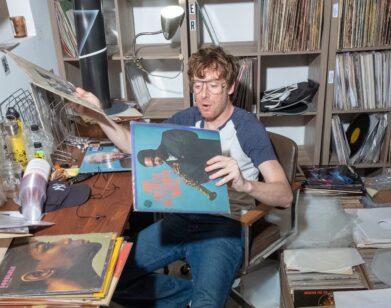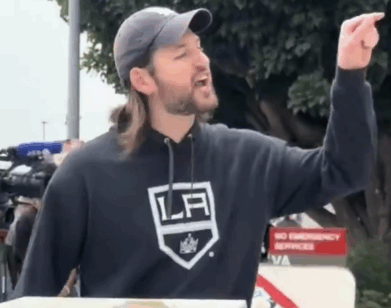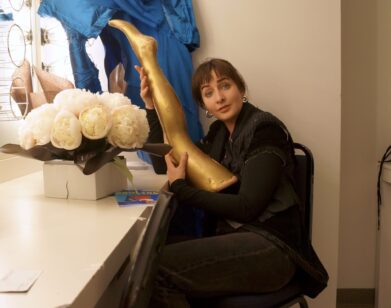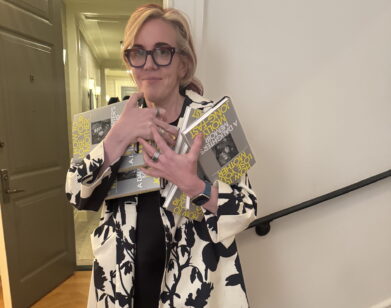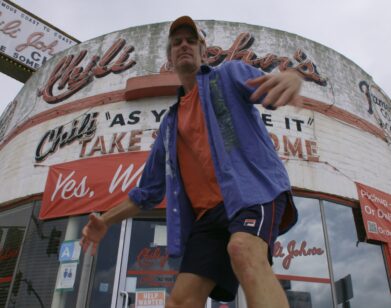Daniel Baron, Uncorked
Tomorrow morning, thousands of wine lovers will descend upon the Oakville vineyard of Silver Oak winery, in Napa Valley, for an action-filled day: live music, unlimited wood-fired pizza, and lots and lots of wine. The guest of honor will be the newest addition to the Silver Oak family: its 2009 vintage Alexander Valley cabernet sauvignon, thousands of bottles of which will be sold tomorrow alone. Central amongst all the hubbub will be Silver Oak’s Director of Winemaking, Daniel Baron, who will spend the day signing the new bottles and doing one of the things he loves best: talking about making wine.
The Oakville property is one of several scattered across the Napa and Sonoma valleys that belong to Silver Oak and its sister line, Twomey. Silver Oak was founded in 1972 by Ray Duncan and Justin Meyer in the single-minded pursuit of great cabernet sauvignon; today, the company produces more than 100,000 cases of cabernet per year from its Alexander Valley and Napa Valley wineries. Twomey Cellars, established in 1999, produces pinot noir, merlot, and sauvignon blanc. Baron oversees it all: he has been Silver Oak’s winemaker since 1994 and helped found Twomey five years later. Baron’s wine education is impressive in both its theoretical and practical particulars: he has a bachelor’s and a master’s degree in viticulture and oenology from UC Davis, and came up at Bordeaux’s legendary Chateau Pétrus, helping Pétrus owner Christian Moueix open Dominus Estate in California in 1982.
After a visit to Silver Oak, we phoned Baron to chat about the new vintage—and everything that came before it.
ALEXANDRIA SYMONDS: Are you excited for this weekend? Or have you been doing this so long that release day isn’t a big deal anymore?
DANIEL BARON: This is about my 37th or 38th release day. I’m always excited to meet all these people, but I can’t say that I have a great deal of anxiety about it.
SYMONDS: Do you do any wrist exercises in the week leading up to it, to prepare for all the signing?
BARON: [laughs] Absolutely. I do the wrist exercises every day to get ready for it.
SYMONDS: How do you describe the ’09 Alexander Valley cabernet?
BARON: The ’09 Alexander Valley I describe as a rich expression of Alexander Valley fruit. It’s got a great black cherry and blackberry character. As is typical of our Alexander Valley wines, it’s a great balance of openness and intensity. The Alexander Valley is always 100 percent cabernet, and it’s quite remarkable that we can get the kind of softness and maturity with only cabernet sauvignon. The cabernet is a very complex variety. One of the things I’ve noticed is this sort of wisteria character coming through in this vintage wine, which is really lovely. And always the sweet baking spices, some of which come from the cabernet and some from the toast of the American oak. It’s really a lovely vintage, and it’s showing beautifully right now.
SYMONDS: It seems to me like there’s almost a yin and yang quality of the Napa versus the Alexander Valley—the Alexander Valley is a more feminine cabernet, while the Napa is more masculine.
BARON: I like the yin and yang; I think that’s true. Because of the warmer, calmer continental climate and the richer soils, the Alex tends to be softer and more opulent, more expressive in its use. The Napa tends to be more muscular and need a little more time, because of the more volcanic soils in Napa; that translates into a more brooding kind of intensity that eventually yields great results. That’s why we hold it back an extra six months. It’s amazing how much the wine changes in that six months. It really opens up, but it needs more time to open up, like one of those taciturn guys.
SYMONDS: [laughs] How often do you taste the wines while they’re waiting in the bottles?
BARON: I try not to over-taste them. I’ll taste them maybe every four to six months. It’s one of those things where if you stay too close to it, you tend to lose perspective. I think any creation is that way; it’s best to step away from it for a little while and come back and look at it again. I think that’s important with wine to try to create some objectivity when you’re evaluating it.
SYMONDS: At what point in a growing season, just based on the weather, do you start to know what the season’s vintage is going to taste like? Are you pretty good at being able to predict that?
BARON: Well, yes, and I’m also superstitious, and I don’t want to say that it’s a great vintage before we’ve gotten the fruit off the vine, because you just don’t want to tempt fate. 2012, for instance, we were very clear that that was a wonderful vintage because it was just a very even and slow ripening that the vines were presenting. 2013 is pretty wonderful, too, but we still have a month and a half or two months to get through before we can declare it a great vintage. 2009 was the year where a typhoon came through on October 13th and dropped six inches of rain, so we were fortunate because of our strategy of not picking fruit that’s overripe. So all our fruit was in, but a number of colleagues were trying to get these big, opulent, alcoholic wines but were caught with the fruit still on the vine; and that changed the vintage overnight for them.
SYMONDS: How much do you let yourself worry from day to day or week to week about the weather? It is just something that you’ve learned to sublimate in order to go about doing your job?
BARON: Yeah, you have to sublimate it, although, we’re blessed in California with such benign weather. I just came back from France, and when I was in Bordeaux, there was a hailstorm, and it was devastating for people. Hail is very localized, and you can have one vineyard block be badly damaged and the very next one is fine. So the people who got hit hard—it was crazy. We don’t have to deal with that, but most of the time we roll with the punches. It’s part of the job. Part of the beauty of making wine is that we work with what Mother Nature gives us every year. 2011 was particularly bad. There was a lot of rain at harvest, and just when we thought we were out of the woods there was another rainstorm. There was one point where my grower-relations guy just had to take me by the elbow and pull me out of the vineyard and say, “Let’s go to the coffee shop.” [laughs] “Everything will look better in a few hours.” Yeah, there are times where it whacks you upside the head. There’s no getting around that. Mother Nature always wins.
SYMONDS: I’d love to hear about how your duties have expanded, from taking over Silver Oak almost 20 years ago to founding Twomey and then adding new varietals in the last decade or so. How has that buildup happened for you, and how do you balance your time now between all of these different endeavors?
BARON: It’s totally been a natural evolution. I was at Dominus before I came here, where I was the general manager, so I was dealing with the finances and the marketing and a lot of things that were far beyond growing grapes and making wine. My training is really in growing grapes and making wine—primarily in growing grapes. One of the things that appealed to me when I interviewed with Justin Meyer back in ’94 was to get back to doing the things that I really enjoyed and felt that were in my skill set. I came to Silver Oak with the intent to work purely in production. In a funny way, I don’t think of it as taking on more responsibility. The way you described it made it seem like I was taking on more burdens, but it’s just more fun. One of the things that’s great about the Duncan family, and I think you got a sense of it, is the support that we get to do the best job we can at each of these levels. We don’t just keep piling things on to someone’s shoulders; we add the staff and equipment and facilities that enable them to do excellent work.
SYMONDS: Silver Oak is still a family-owned winery, which I think is pretty unique for a winery this size. Beyond what you just said, I’m curious about how you feel like that’s been advantageous for you as the winemaker.
BARON: The family aspect of the winery is extraordinary. It’s a long-term business with a five-year production cycle, and it takes patience and understanding, and the Duncans more than understand that. Ray Duncan has been here since 1972, and when Ray asked his youngest son, David, to come manage the winery, the first thing he did was he came and worked in the cellar. He worked in the cellar, he went out in the vineyards with me, he worked in the tasting room—he did every aspect of what we do, so he could understand it. It really informs his management. People don’t leave here. [laughs] We have a very strong employee base because of how well the Duncans treat the employees and how well they acknowledge the importance of the morale going into the wine.
[Ray Duncan and] Justin Meyer founded Silver Oak in 1972, and Justin had just left the Christian Brothers teaching order—he was a monk. They sent him to UC Davis, where met a young woman, and one of the vows he took didn’t jibe with his desire to get married and start a family. And Ray comes from a very religious family. His brother was a monsignor and was very involved with the Catholic Church. They founded this business on moral principles, right from the very beginning. It’s come to be an accepted business model in the 21st century, but in 1972 it wasn’t that common of a business model to say, “We can treat everyone with respect and everyone can win here.” We pay our growers fairly; we’re conscious when they have a bad vintage. I’ll never forget one year where the Napa Valley average price lagged behind what was really going on in the field and Justin came to me and said, “You know, I think we should pay the growers more this year. Just go out and tell them that we’re going to pay them another $500 a ton,” or whatever it was. I was like, [laughs] “Who does that?”
SYMONDS: It seems like there are all these ways to cut corners or expedite the process of winemaking that you guys just choose not to do—like with the soutirage process that you use with the Twomey merlots, which is traditional in France but very rarely used in California. When you first made the decision to do that, what was the response like from other people? When you started telling people, “We’re going to start using soutirage traditionnel,” did people believe that the results wouldn’t be worth the extra time and manpower?
BARON: I don’t know what they said behind my back, but I think people tended to be pretty impressed with it. I didn’t see anyone running out and doing it. I had been working in the wine business for 13 years when I went to Bordeaux, and I thought I had a pretty good foundation. I had gotten my two degrees from UC Davis and had worked in the field for quite a bit, but I was taken aback by the attention to detail in the great chateaus of Bordeaux, and how much they cared and how much they paid attention to every little aspect of things. That really changed my approach to winemaking. It’d be one thing if you’re making a fighting varietal and your margins are paper-thin and you’ve got to sweat every dollar you spend on production, but if you’re making a luxury product like we are, I think you owe it to the consumer to really not cut corners and to do everything you can to assure the quality of the product. I pride myself on my scientific background, and my staff’s. We don’t do fads. A lot of people in this business do things because their neighbors are doing them or because they saw someone doing it, but they don’t really vet it to see if it gives them the results they want. That’s something we do. We’re also at a level of excellence that changing something could make it worse. [laughs] So we really need to make sure that we’re not changing for change’s sake.
SYMONDS: There’s such an emphasis on this five-year process at Silver Oak. How much time do you spend thinking about the vintage that’s just come out, versus the vintage that’s about to come out, versus the one that’s growing on the vine right now?
BARON: I think very little about the vintage that’s about to come out, because there’s not much I can do about it. [laughs] So, I’m really thinking about this vintage right now, especially this time of year. My focus is on the 2013 vintage and what’s going on with water management, if we should be irrigating, if the crop levels are correct, how the weather is effecting the ripening—all those aspects. I’m thinking a little bit about last year’s vintage, because that wine is in process. I just came from a tasting of over 50 wines from the 2012 vintage. What we call the grower lots—the individual components of the blend—even though the blend is made, we keep a barrel or two of each of the components separately so that we can refresh our memories about our ripening and picking decisions from last year, and that will inform our picking decisions this year. I’m thinking a little bit about the 2011 that is still in barrel. The vintages that are in process, we still need to pay attention to them, because we have actions to take that will affect their outcome. But 2010, 2009—they’re in bottle, they’re resting, they’re evolving, so they’re really put to bed. I’ll start thinking about them again when we pull the corks on Saturday. There’s not a lot I can do right now to change that outcome. That work was done three years ago.
SYMONDS: It’s like sending a kid off to college.
BARON: Exactly, you did the work when they were four and five but by the time they’re 21 there’s not a lot you can do. You just stand back and watch—and enjoy them. [laughs] Hopefully.
SYMONDS: When you interact with your customers, what have you heard about Silver Oak that’s meant the most to you?
BARON: I think the kind of thing you said: “This is my family’s favorite wine; we drink it on special occasions.” Those things are amazing to me. We get to know a number of celebrities who come through here, and Orlando Cepeda told me when he got inducted into the Hall of Fame he had a bottle of Silver Oak in his suitcase, and as soon as he got back to his hotel, he pulled the cork and that’s what he used to toast getting into The Hall of Fame. How cool is that? When people come and tell me how much they love the wine on release day and thank me for producing the wines, which I think is probably too much credit to me and not enough to the whole team, but it’s very gratifying. I think in modern culture there aren’t that many people who make things anymore. To make something that gives people pleasure—I guess I think of my friend Lynn Dudenbostel, who makes beautiful musical instruments, he gets those kinds of compliments too, and I’m sure he feels the same way. It makes you feel warm inside to know that all the hard you work you put in gives people that much joy.
SYMONDS: What single glass of wine would you want to be your last?
BARON: Wow, that’s tough. [talks to someone else in the room and laughs] Ian says the 2050 Silver Oak. I can’t beat that one. I was born in 1949, so that would mean I would be 105 years old.
SILVER OAK’S 2009 ALEXANDER VALLEY CABERNET WILL BE AVAILABLE IN STORES AFTER RELEASE DAY THIS SATURDAY. FOR MORE ON THE BRAND, VISIT ITS WEBSITE.

